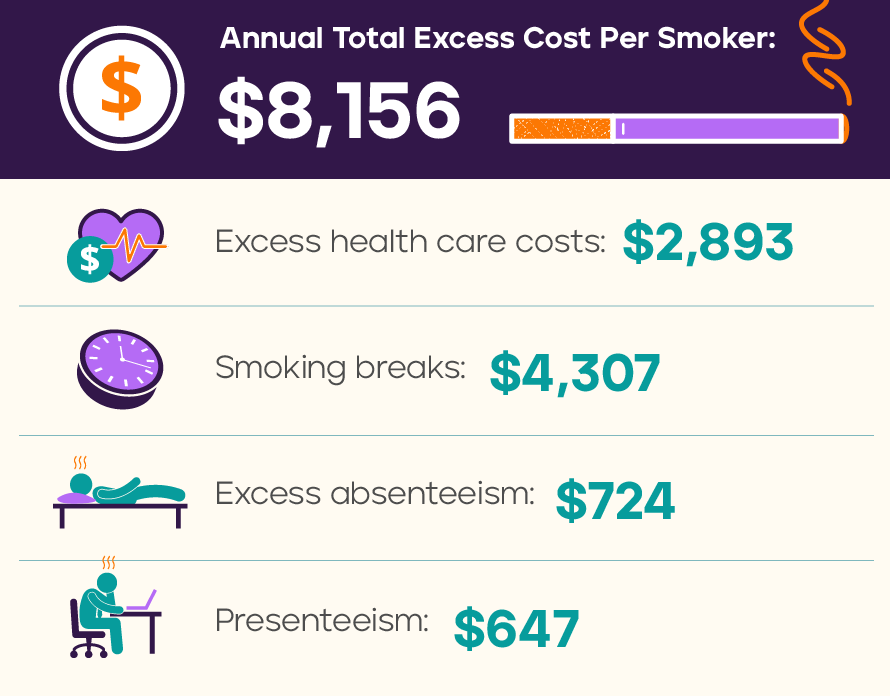Smoking and health care costs are like mosquitoes and bug bites; they often appear together. But what happens when someone quits smoking? How soon will your company start to see health care cost savings?
Here’s what the research shows.
Impact of smoking on health care costs
If you’re with an employer or health plan, you’ve likely seen the cost of smoking cited as $8,156 extra per person per year for every tobacco user compared to a non-smoker.
Of that amount, $2,893 is attributed to excess health care costs; the rest is the cost for productivity loss, absenteeism, and presenteeism.
While an individual will likely feel the health benefits of quitting tobacco within weeks or months, it actually takes a little longer to affect health care costs.
After someone quits, an analysis in the American Journal of Preventive Medicine found the savings in health care costs start to show at 18 months after the last tobacco use.
At a year and a half post-quit, continuous sustained quitters had $541 less in health care costs EACH QUARTER than continuing smokers. That translates to more than $2000 per year per quitter in health care costs saved!
And from there, the savings can keep growing. The most recent Surgeon General report confirms there is strong evidence supporting the link between smoking cessation and a reduction in costly diseases.
Quitting smoking and health care costs in first 3 months
However, there is one caveat to note about the first 3 months after quitting.
Studies on a variety of patient populations showed a brief spike in costs around the time of quitting tobacco. Researchers note this might be the case because people are likely amid a health care episode and see that time as ideal for cessation. They may be in the hospital or suffering from an intense event like a heart attack, and that serves as a wake-up call to quit.
But researchers found this increase in health care costs dissipates within 3 months after quitting.
Beyond health care costs
While the ROI of tobacco cessation in reduced health care costs can take a little time, notable non-financial effects can come into play almost immediately.
For employers, for example, these notable indirect benefits can include:
- Reduced absenteeism and presenteeism as individual health improves. This means fewer sick days taken, and less time on the job distracted by nicotine cravings, or thinking about the next smoke break.
- Improved productivity without numerous smoke breaks throughout the day.
- Better morale overall, since there can be tension between tobacco users and non-users in a workplace.
- Improved financial health (and potential reduced money-related stress) for individuals due to cost savings realized from not buying tobacco.
In short, there are both immediate effects and longer-term benefits that are good for your bottom line when your employees quit tobacco.
See how we can help you start to realize these short- and long-term gains by offering the EX Program to your population. Visit our Program page to learn more today.





